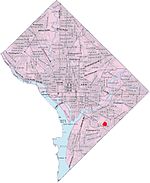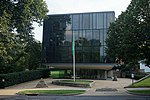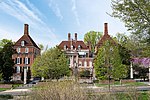Woodland Normanstone

Woodland Normanstone is a small, residential neighborhood in Northwest Washington, D.C., adjoining the larger neighborhoods of Woodley Park, Massachusetts Avenue Heights, and Observatory Circle. The Woodland Normanstone neighborhood is bounded on by Garfield Street to the north, Cleveland Avenue and Calvert Street to the northeast, 28th Street to the east, Rock Creek Park to the southeast, Massachusetts Avenue to the southwest, and 34th Street to the west. It is served by the Woodley Park Metro station on the Washington Metro Red Line. Woodland Normanstone Neighborhood Association, established in 1989, represents the neighborhood. There are no commercial businesses; it is a neighborhood of detached single-family homes. Of the 160 houses in the neighborhood, 24 are residences for embassies.The neighborhood is not well known elsewhere in the city. It is reportedly home to a number of government officials.
Excerpt from the Wikipedia article Woodland Normanstone (License: CC BY-SA 3.0, Authors, Images).Woodland Normanstone
Massachusetts Avenue Northwest, Washington
Geographical coordinates (GPS) Address Nearby Places Show on map
Geographical coordinates (GPS)
| Latitude | Longitude |
|---|---|
| N 38.9207 ° | E -77.0608 ° |
Address
Embassy of South Africa
Massachusetts Avenue Northwest
20008 Washington
District of Columbia, United States
Open on Google Maps











